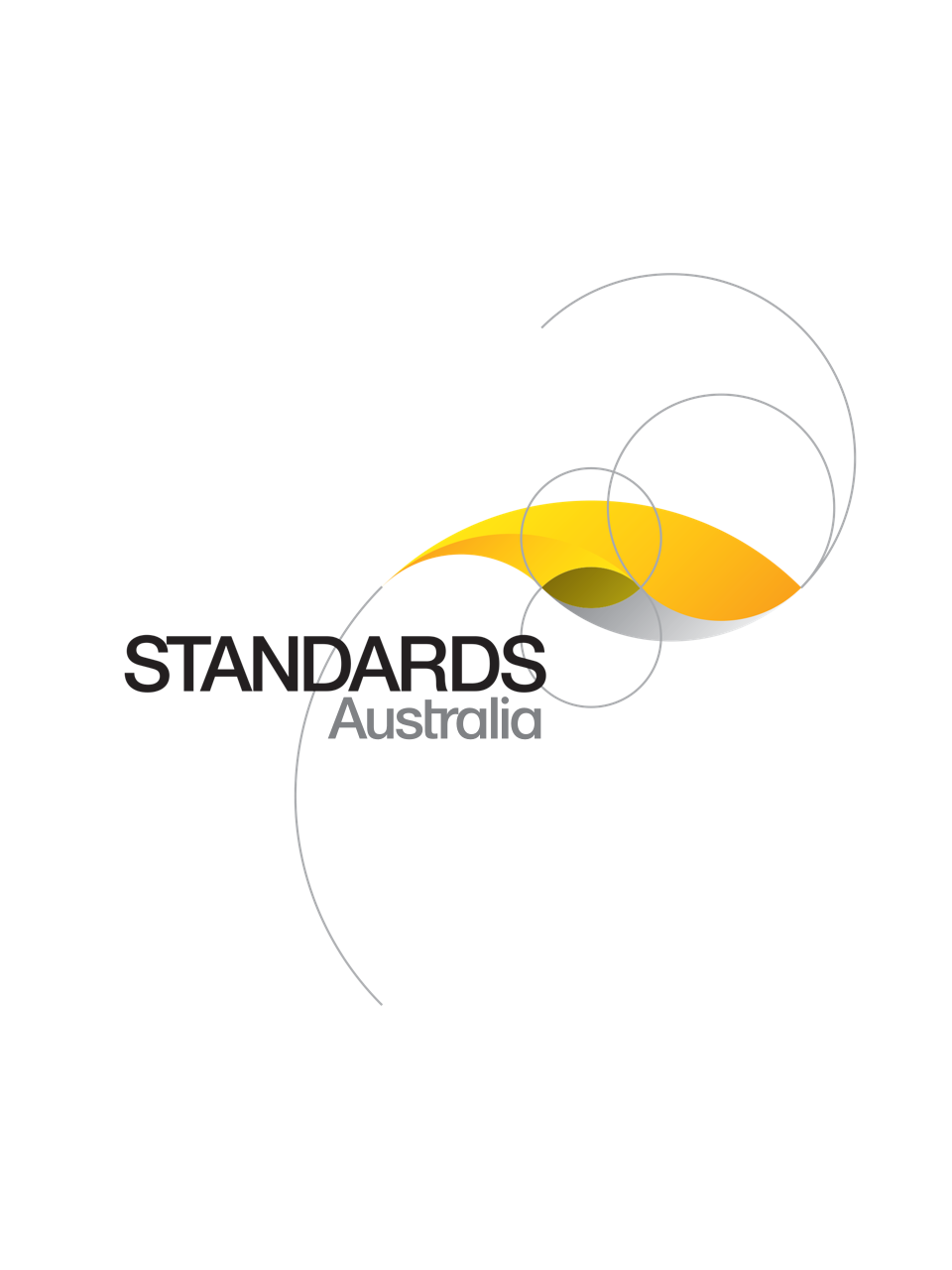Standard
UPDATE AVAILABLE
Track updates
AS 5216:2018
[Available Superseded]Design of post-installed and cast-in fastenings in concrete
This Standard specifies minimum design requirements for fasteners used to transmit loads to concrete for safety-critical applications.
Published: 04/05/2018
Pages: 100
Table of contents
Cited references
Content history
Table of contents
Header
About this publication
PREFACE
1 SCOPE AND GENERAL
1.1 SCOPE AND APPLICATION
1.1.1 Scope
1.1.2 Application
1.2 NORMATIVE REFERENCES
1.3 DEFINITIONS
1.4 NOTATION
1.5 LOADING ON FASTENERS
2 MATERIALS AND INSTALLATION
2.1 TYPES OF FASTENERS AND FASTENER GROUPS
2.2 DIMENSIONS OF FASTENERS
2.3 FASTENER MATERIALS
2.4 CONCRETE
2.5 REINFORCEMENT
3 GENERAL DESIGN REQUIREMENTS
3.1 GENERAL
3.2 VERIFICATIONS FOR DESIGN
3.2.1 Strength limit state
3.2.2 Serviceability limit state
3.2.3 Load factors
3.2.4 Capacity reduction factors
3.3 CONCRETE CONDITION
3.4 VERIFICATION OF FASTENER STRENGTH
3.4.1 General
3.4.2 Tensile strength of fastener
3.4.2.1 Post-installed fasteners
3.4.2.2 Cast-in anchor channel
3.4.3 Shear strength of fastener
3.4.3.1 Post-installed fasteners
3.4.3.2 Cast-in anchor channel
3.4.4 Combined tension and shear strength of fastener
4 DETERMINATION OF FORCES ACTING ON FASTENERS
4.1 GENERAL
4.2 POST-INSTALLED FASTENERS
4.2.1 Tension and compression loads
4.2.2 Shear loads
4.2.2.1 General
4.2.2.2 Load distribution
4.2.2.3 Shear load without a lever arm
4.2.2.4 Shear load with a lever arm
4.3 ANCHOR CHANNEL
4.3.1 General
4.3.2 Tension loads
4.3.3 Shear loads
4.4 SUPPLEMENTARY REINFORCEMENT
4.4.1 General
4.4.2 Applied tension loads
4.4.3 Applied shear loads
5 DETAILING OF SUPPLEMENTARY REINFORCEMENT
6 DESIGN FOR TENSILE LOADING
6.1 GENERAL
6.2 POST-INSTALLED FASTENERS
6.2.1 General
6.2.2 Steel failure
6.2.3 Concrete cone failure
6.2.3.1 General
6.2.3.2 Characteristic strength of a single fastener
6.2.3.3 Geometric effect of edge distance and spacing
6.2.3.4 Distribution of stresses in concrete
6.2.3.5 Shell spalling
6.2.3.6 Eccentricity of loading on a fastener group
6.2.3.7 Compression between fixture and concrete
6.2.3.8 Narrow concrete member
6.2.4 Pull-out failure
6.2.5 Combined pull-out and concrete cone failure for post-installed chemical fasteners
6.2.5.1 General
6.2.5.2 Characteristic bond strength of an individual chemical fastener
6.2.5.3 Geometric effect of edge distance and spacing
6.2.5.4 Disturbance to the distribution of stresses
6.2.5.5 Effect of closely spaced fasteners
6.2.5.6 Eccentricity of loading on a fastener group
6.2.5.7 Narrow concrete member
6.2.6 Concrete splitting failure
6.2.6.1 Concrete splitting failure during installation
6.2.6.2 Concrete splitting failure due to loading
6.2.7 Concrete blow-out failure
6.2.7.1 General
6.2.7.2 Characteristic concrete blow-out strength of an individual fastener
6.2.7.3 Geometric effect of edge distance and spacing
6.2.7.4 Distribution of stresses in concrete
6.2.7.5 Effect of closely spaced fasteners
6.2.7.6 Eccentricity of loading on a fastener group
6.2.8 Supplementary reinforcement
6.3 CAST-IN ANCHOR CHANNEL
6.3.1 General
6.3.2 Steel failure
6.3.2.1 General
6.3.2.2 Characteristic strength against lip failure
6.3.3 Concrete cone failure
6.3.3.1 General
6.3.3.2 Influence of neighbouring anchors
6.3.3.3 Influence of an edge
6.3.3.4 Influence of a corner
6.3.3.5 Narrow concrete member
6.3.4 Pull-out failure
6.3.5 Concrete splitting failure
6.3.5.1 Concrete splitting failure during installation
6.3.5.2 Concrete splitting failure due to loading
6.3.6 Concrete blow-out failure
6.3.6.1 General
6.3.6.2 Thickness of concrete member
6.3.7 Supplementary reinforcement failure
7 DESIGN FOR SHEAR LOADING
7.1 GENERAL
7.2 POST-INSTALLED FASTENERS
7.2.1 General
7.2.2 Steel failure
7.2.2.1 General
7.2.2.2 Shear force without lever arm
7.2.2.3 Shear force with lever arm
7.2.3 Concrete edge failure
7.2.3.1 General
7.2.3.2 Basic characteristic shear strength
7.2.3.3 Geometric effect of spacing and edge distance
7.2.3.4 Disturbance to the distribution of stresses
7.2.3.5 Influence of member thickness
7.2.3.6 Eccentricity of loading on a fastener group
7.2.3.7 Direction of loading
7.2.3.8 Edge reinforcement
7.2.3.9 Narrow concrete member
7.2.4 Concrete pry-out failure
7.2.4.1 General
7.2.4.2 Application of torque moment to fixture
7.2.5 Supplementary reinforcement
7.3 CAST-IN ANCHOR CHANNEL
7.3.1 General
7.3.2 Steel failure
7.3.2.1 General
7.3.2.2 Flexural failure of channel lips
7.3.2.3 Shear force with lever arm
7.3.3 Concrete edge failure
7.3.3.1 General
7.3.3.2 Basic characteristic shear strength
7.3.3.3 Disturbance to the distribution of stresses
7.3.3.4 Influence of a corner
7.3.3.5 Influence of member thickness
7.3.3.6 Direction of loading
7.3.3.7 Narrow concrete member
7.3.4 Concrete pry-out failure
7.3.5 Supplementary reinforcement
8 DESIGN FOR COMBINED TENSION AND SHEAR LOADING
8.1 STEEL FAILURE
8.1.1 Post-installed fasteners
8.1.2 Cast-in anchor channel
8.1.2.1 Steel failure of the channel bolt
8.1.2.2 Anchor channel without supplementary reinforcement
8.1.2.3 Anchor and anchor channel connection modes of failure
8.2 FAILURE MODES OTHER THAN STEEL
8.2.1 Post-installed fasteners
8.2.2 Cast-in anchor channel
8.3 ADDITIONAL VERIFICATION FOR FASTENERS WITH SUPPLEMENTARY REINFORCEMENT
8.3.1 Post-installed fasteners
8.3.2 Cast-in anchor channel
9 DESIGN FOR SERVICEABILITY
9.1 VERIFICATION OF SERVICEABILITY LIMIT STATE—DISPLACEMENT
9.2 VERIFICATION OF SERVICEABILITY LIMIT STATE—SUPPLEMENTARY REINFORCEMENT
APPENDIX A
A1 TESTING PROCEDURES AND REPORTING
A1.1 General
A1.2 Test report
A2 ASSESSMENT REQUIREMENTS AND REPORTING
A2.1 Assessment
A2.1.1 General
A2.1.2 Post-installed fasteners
A2.1.3 Cast-in fasteners
A2.2 Assessment report
APPENDIX B
B1 GENERAL
B2 INSTALLATION
B3 STATISTICAL SAMPLING
B4 MANUFACTURING
B5 REGISTERED TESTING AUTHORITY
B6 ASSESSMENT BODY
B7 DEMONSTRATION OF PRODUCT SUITABILITY
APPENDIX C
C1 GENERAL
C2 LIGHTLY LOADED APPLICATIONS
C2.1 General
C2.2 No additional verification for transmission of loads required
C2.3 Verification for local transmission of fastener loads required
C2.4 High load applications
APPENDIX D
D1 GENERAL
D2 POST-INSTALLED FASTENERS
D3 ANCHOR CHANNEL
APPENDIX E
E1 GENERAL
E2 DESIGN METHOD A
E3 DESIGN METHOD B
E3.1 General
E3.2 Basic design strength
E3.3 Characteristic strength with reduced spacing or edge distance
E3.4 Additional provisions
E4 DESIGN METHOD C
Bibliography
Amendment control sheet
AS 5216:2018
Amendment No. 1 (2019)
Correction
Cited references in this standard
[Current]
Methods of testing concrete, Method 9: Compressive strength tests - Concrete, mortar and grout specimens
[Current]
Specification and supply of concrete - Commentary (Supplement 1 to AS 1379-2007)
[Current]
Concrete structures - Commentary (Supplement 1 to AS 3600:2018)
[Current]
Structural design actions, Part 0: General principles - Commentary (Supplement to AS/NZS 1170.0:2002)
Content history
[Current]
[Superseded]
[Superseded]
DR AS 5216:2017
One-time Purchase
Access via web browser on any device
One-time purchase
Single publication
Offline access via PDF^
$176.39 AUD
Inclusive of GSTFormat *
Web Reader
Licenses *
1 License (for yourself - not shareable)
Total$176.39 AUD
IMPORTANT
